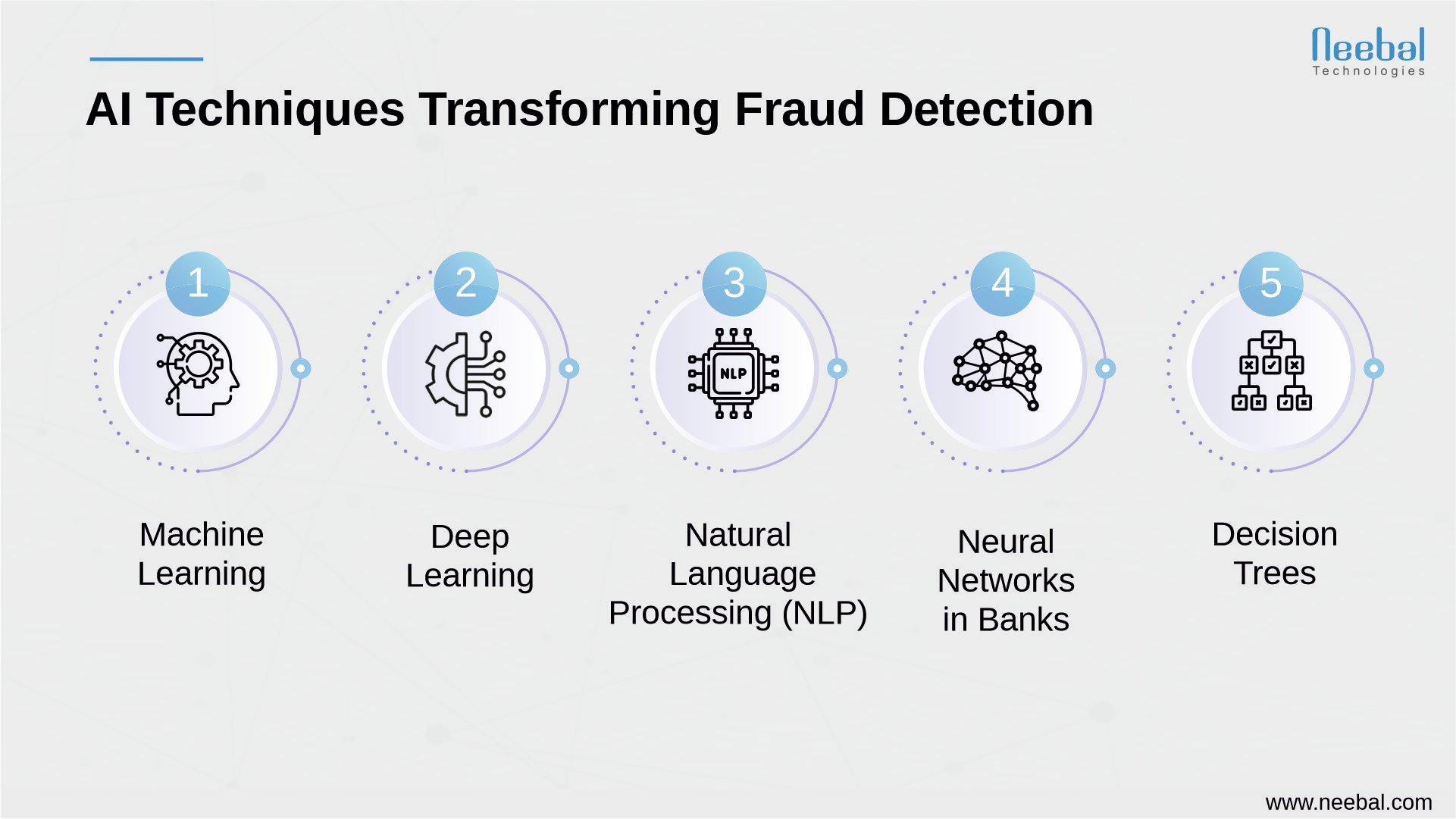A surge in scams has become a challenge for banks, financial institutions, and fintech sectors. Every year, a variety of scams, ranging from physical attacks to digital frauds, underscore the need for innovative solutions. This blog takes a deep dive into the transformative impact of AI on fraud detection, empowering businesses to stay ahead of increasingly sophisticated fraudsters.
The Faces of Financial Frauds Unveiled
Annually, the financial sector becomes a battleground for scams, categorized into physical attacks, internal cooperation violations, and digital frauds. The latter encompasses a myriad of internet fraud operations, while the former two involve conventional or employee-based methods. In response, automation and machine learning have emerged as crucial allies, providing businesses with tools to combat the evolving strategies of fraudsters, ultimately protecting both business and client interests.
Tech Giants Leading the Way
For a considerable period, industry giants like Facebook, Amazon, Apple, Netflix, and Google have been pioneers in integrating their proprietary AI technologies into front-end and back-end business processes. This prioritization of AI has set a standard for the financial sector, urging banks to continuously gather and utilize fresh data to build AI models, thus ensuring they stay competitive in the ever-evolving technological landscape.
AI Techniques Transforming Fraud Detection

Enterprises are increasingly turning to AI tools to fortify their defenses against fraud. Several AI methods play a pivotal role in successful fraud detection:
- Machine Learning: Fraud detection tools developed for various industries, including fintech, e-commerce, banking, healthcare, and online gambling, leverage machine learning algorithms. By analyzing large volumes of data, these tools can identify patterns, fortifying enterprises against fraudulent activities.
- Deep Learning: A standout example is Mastercard's use of AI to reduce false declines and prevent card-related fraud. The system makes decisions based on a continuous stream of data and self-teaching algorithms, resulting in remarkable reductions in fraudulent activity and false declines. Deep learning models continuously learn from the 75 billion transactions processed annually across 45 million locations worldwide.
- Natural Language Processing (NLP): Companies like American Express, Bank of New York Mellon, and PayPal utilize NLP to detect fraud. NLP's ability to enhance anomaly detection over time enables more effective identification and prevention of fraudulent behaviors by extracting signals from chat, voice, and IVR interactions.
- Neural Networks in Banks: AI models mimicking the human brain's complex organization analyze historical databases of transactions, including known fraudulent ones. With each transaction, the model enhances its accuracy, continuously identifying and countering the patterns of seasoned fraudsters.
- Decision Trees: A visual representation of decision-making processes, decision trees are used in fraud detection to pinpoint key elements leading to fraud. This aids in building systems for spotting fraudulent transactions.
Expanding on AI Techniques in Fraud Detection:
Delving deeper into these AI techniques reveals the intricate ways in which they operate to bolster fraud detection capabilities.
Machine Learning
In the intricate landscape of fraud detection, machine learning stands as a stalwart ally. Its ability to analyze vast datasets swiftly and identify patterns makes it a formidable tool across various industries. For instance, in the realm of online gambling, machine learning algorithms can swiftly sift through immense amounts of transactional data, identifying anomalies and patterns indicative of fraudulent activity.
Deep Learning:
Mastercard's pioneering use of deep learning models showcases the power of continuous adaptation. By processing an astronomical number of transactions worldwide, these models refine their understanding of legitimate and fraudulent activities. This continuous learning loop contributes to the significant reduction of false declines, ensuring genuine transactions aren't mistakenly flagged.
Natural Language Processing (NLP):
The implementation of NLP in fraud detection, as seen in companies like American Express and PayPal, adds a layer of sophistication. By extracting signals from various communication channels, including chat, voice, and IVR interactions, NLP enhances anomaly detection. This nuanced approach allows for the identification of subtle cues that may indicate fraudulent behaviors.
Neural Networks in Banks:
The emulation of the human brain's complexity through neural networks provides banks with a dynamic tool. Analyzing a historical database of transactions, including those known to be fraudulent, these AI models continuously refine their understanding. With each transaction, the neural network adapts, ensuring a proactive approach to countering the evolving tactics of seasoned fraudsters.
Decision Trees:
In fraud detection, the visual representation of decision-making processes through decision trees is instrumental. These trees help pinpoint key elements contributing to fraudulent transactions, enabling the creation of effective systems for detection. By visually mapping out the decision-making flow, businesses can swiftly identify potential points of vulnerability and strengthen their defenses.
Conclusion
AI holds enormous promise in revolutionizing fraud detection, offering the potential to elevate detection rates, reduce financial losses, and enhance operational effectiveness. However, it's crucial to acknowledge that AI-based systems aren't a one-size-fits-all solution for fraud detection. The effectiveness of these systems hinges on the quality and quantity of accessible data, coupled with the thoughtful creation and use of AI algorithms.
Ethical considerations and regulatory compliance are important when adopting AI-based systems for fraud detection. As financial institutions continue to invest and collaborate in developing and adopting AI-based systems, the potential and future of AI in fraud detection become substantial. The journey toward a safer financial landscape is paved with ongoing advancements in AI, ensuring that businesses can stay one step ahead of the ever-evolving landscape of financial fraud.
Neebal transforms fraud detection with cutting-edge AI solutions. By leveraging advanced technologies like machine learning and neural networks, Neebal ensures robust protection for financial institutions. Their tailored AI models analyze vast datasets, swiftly identifying suspicious patterns and behaviors. With a commitment to continuous improvement, Neebal's solutions evolve alongside emerging fraud tactics. Ethical considerations and regulatory compliance are at the forefront, ensuring a secure and reliable defense against financial fraud. Neebal's expertise in deploying AI-based systems empowers businesses to fortify their fraud prevention strategies, fostering a safer and more resilient financial ecosystem.
